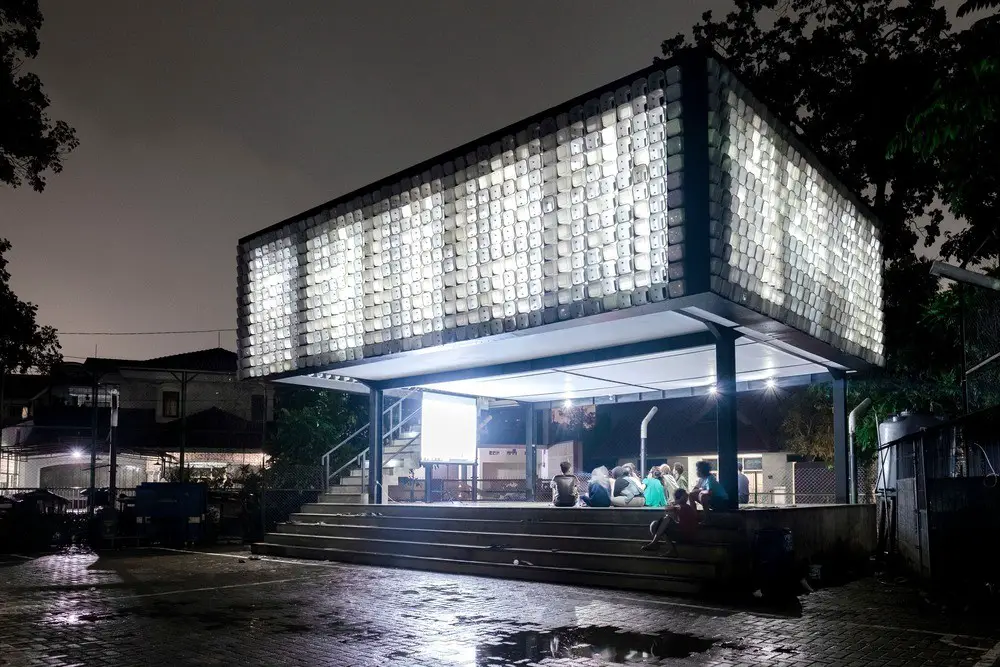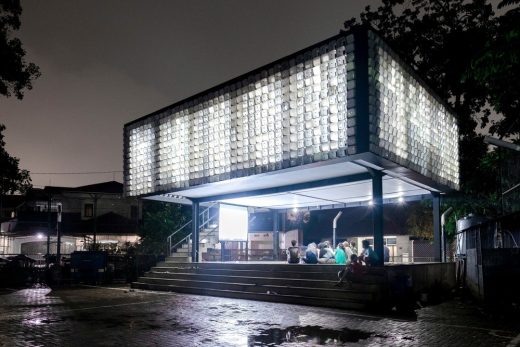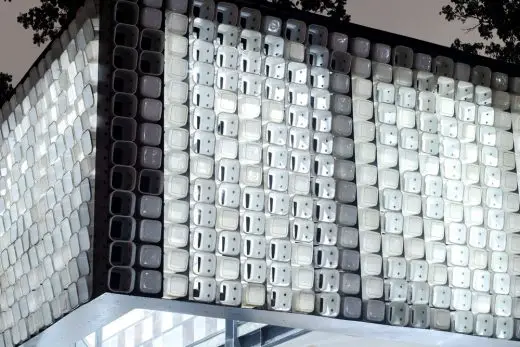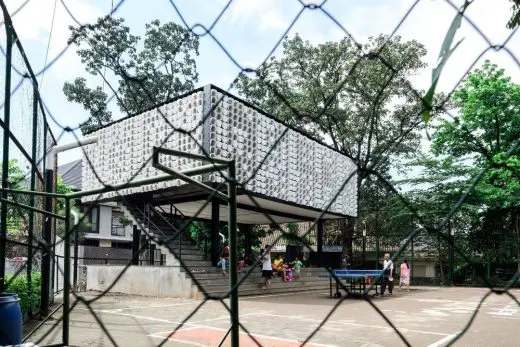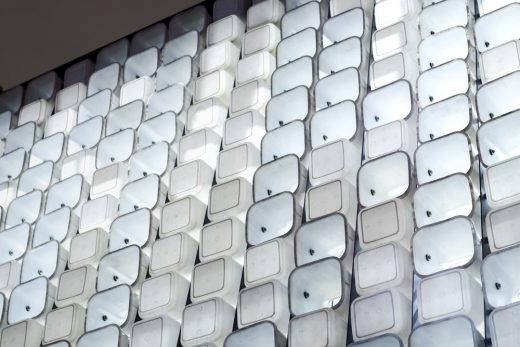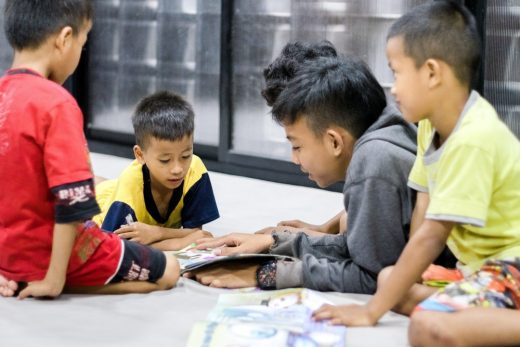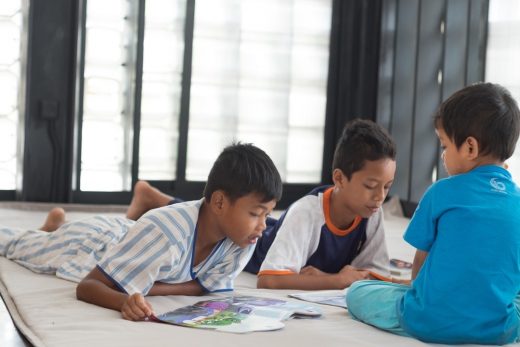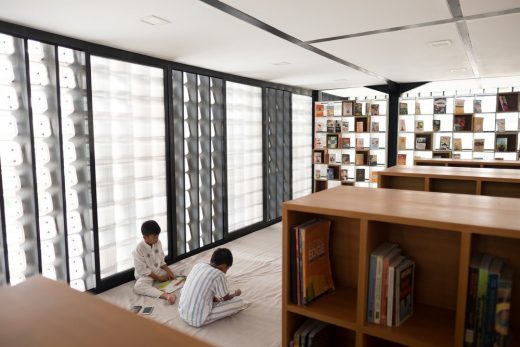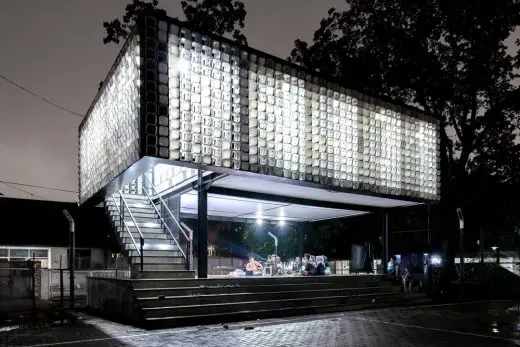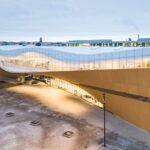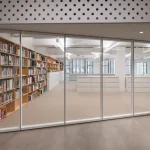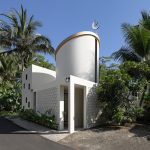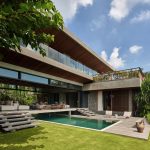Microlibrary Bima, Indonesia Building, Bandung Architecture, Architect, Development, Images
Microlibrary Bima in Indonesia
2000-Ice-Cream-Bucket-Project in Taman Bima, Bandung, Southeast Asia – design by SHAU, Architects
1 Aug 2017
Microlibrary Bima – 2000-Ice-Cream-Bucket-Project
Architects: SHAU
Location: Taman Bima, Bandung, Indonesia
Microlibrary Bima
Microlibraries: Small but Many, From Bandung to the Global South
In 2012, the ‘100 Microlibraries’ program was initiated to make learning attractive and reachable for Indonesia and beyond. Although the economic forecast for Indonesia is optimistic, the current infrastructure does not support to improve its Human Development Index. Eager-learning students are hindered by the lack of facilities; libraries are far from being popular. The role of beautiful design can make libraries attractive again. Instead of positioning libraries only in city centers, why not bringing libraries closer to homes?
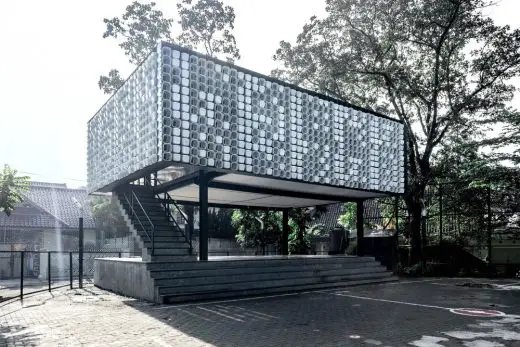
The mayor of Bandung Ridwan Kamil accommodated the idea and immediately provided a site. ‘Microlibrary Bima’ is the first realized prototype of a series of Microlibraries in different locations throughout Indonesia and the Global South. More microlibraries are under construction and in planning in thirteen different neighbourhoods and parks in Bandung. Each microlibrary is uniquely designed to fit programmatic demands of each site and community.
Microlibrary Bima: Upcycling 2000 ice cream buckets
Microlibrary Bima is located at Taman Bima in Bandung, Indonesia. The neighborhood consists of diverse middle and lower-income residents. The building is situated in a small square with a pre-existing stage that was already used by the local community for gatherings, events and sports activities. The planning intention was to add rather than take away, so SHAU decided to enhance the open stage by shading it, making it rain protected and cover it in form of the floating library box.
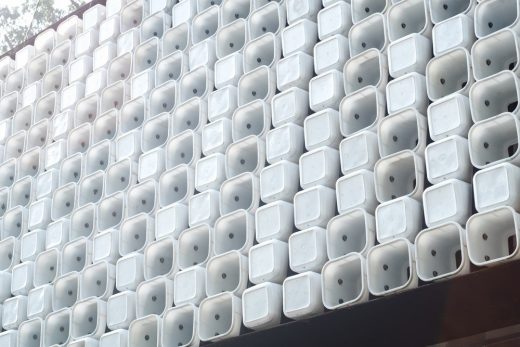
The building is constructed via a simple steel structure made from I-beams and concrete slabs for floor and roof. The stage was reworked in concrete and a previously missing, full-length stairs were added. As the building is located in a tropical climate, the aim is to create a pleasant indoor climate without the use of air conditioning. Therefore, it is important to use available façade materials in the neighborhood that were cost efficient, could shade the interior, let daylight pass and enable enough cross ventilation. Initially, the architects found several small vendors selling used, white and translucent jerry cans. However, prior to construction the jerry cans were no longer available in the required quantities. Instead, the team found used plastic ice cream buckets that were being sold in bulk. This turned out for the better as they have a more positive image and are more stable when cutting the bottom open for cross ventilation.
While studying design options of how to arrange 2000 ice cream buckets, SHAU team realized that they could be interpreted as zeros (opened) and ones (closed), thus giving them the possibility to embed a message in the façade in the form of a binary code. SHAU asked the Mayor of Bandung, Ridwan Kamil, a supporter of the project whether he had a message for the Microlibrary and neighborhood and his message is: “buku adalah jendela dunia”, which means ‘books are the windows to the world’. The message can be read starting from the top left (facing the front) and spirals down around the perimeter repeatedly. Not only does the facade give additional meaning to the building but the buckets also generate a pleasant indoor light ambiance since they scatter direct sunlight and act as natural light bulbs.
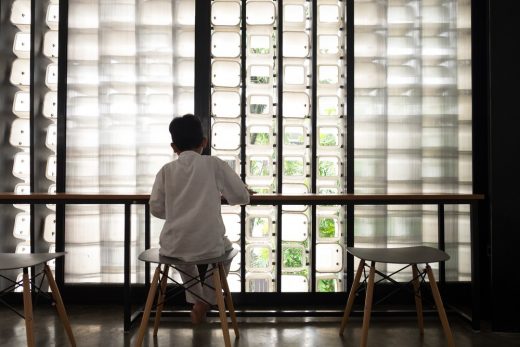
The buckets were then placed in between vertical steel ribs spanning from floor to roof and are inclined towards the outside to repel rainwater. For more harsh tropical rainstorms translucent sliding doors in the inside can be closed temporarily. Mounting 2000 buckets, making the fixture and punching out bottoms of more than half of them is time consuming. However, the local craftsmen made their own punch out/cutting tools to be faster while also maintaining sharp and clean edges.
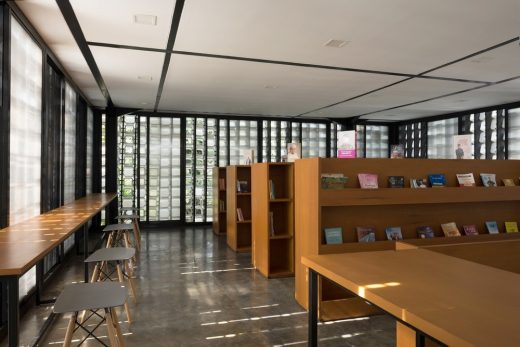
The Microlibrary adds identity and is a source of pride for all the people in the neighborhood. The activities and teaching are currently supported and organized by Dompet Dhuafa (Pocket for the Poor) and the Indonesian Diaspora Foundation. However, the ultimate goal is to enable the local people to organize the content and maintenance independently. A local elementary school has started to visit the microlibrary 2 times per week as a part of their curriculum.
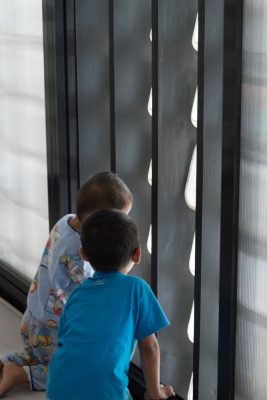
The Architizer A+ Awards 2017
Microlibrary Bima received both the jury and public choice awards from New York-based Architizer A+ Awards 2017 in the ‘Community + Architecture’ category. The project competed with entries from 100+ countries.
Microlibrary Bima – Building Information
Official name of the project: Microlibrary Bima
Location: Taman Bima, Bandung, Indonesia
Budget: 40,000 EUR
Project end date: 15 September 2015
Area: 160 sqm (including stage)
Client: City of Bandung
Sponsors: Dompet Dhuafa (Pocket for the Poor)
Urbane Community
Indonesian Diaspora Foundation (IDF)
Architects: SHAU
Florian Heinzelmann, Daliana Suryawinata, Yogi Ferdinand with Rizki Supratman, Roland Tejo Prayitno, Aditya Kusuma, Octavia Tunggal, Timmy Haryanto, Telesilla Bristogianni, Margaret Jo, Angga Rosiawan, Aistyara Charmita
Signage graphic design: Nusae
Contractors: Yogi Pribadi, Pramesti Sudjati, Joseph Lunardi
About SHAU
SHAU is a rising architecture and urban design practice creating innovative and imaginative designs which aim to pose statements on societal and environmental issues, by incorporating alternative energy sources, new and recycled materials, and multi-programmatic spaces. Established in 2009 by Florian Heinzelmann, Tobias Hofmann and Daliana Suryawinata in Rotterdam (Netherlands), SHAU has expanded to Passau (Germany) and Bandung (Indonesia). Their key built and ongoing projects include a high-rise community residential tower ’Swarnabumi residence’ in Bandung, a 70 hectare-alternative reclamation masterplan in Jakarta, a 1000m2 semi-open air ‘Film Park’ and 100 ‘Microlibraries’.
SHAU proposes to elevate the role of architecture consultancy; architects could –and should – also become a stakeholder, project owner, fundraiser, and community engager. This attitude is in contrast with the classical notion of architecture as a mere service industry.
Photography: Sanrok Studio
Microlibrary Bima in Indonesia images / information received 010817
Taman Bima Microlibrary in Bandung
Location: Sumur Bandung, Indonesia, Southeast Asia
New Indonesian Architecture Designs
Contemporary Architecture in Indonesia
Indonesia Architecture Design : links
Jakarta Jaya: the Green Manhattan, island of Java, Indonesia
Design: SHAU
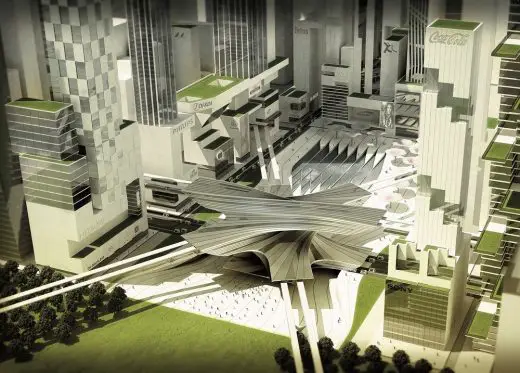
image from architects
Jakarta Jaya
Terminal 3 Ultimate of Soekarno-Hatta Airport, Jakarta, island of Java
Design: AlvinT Studio
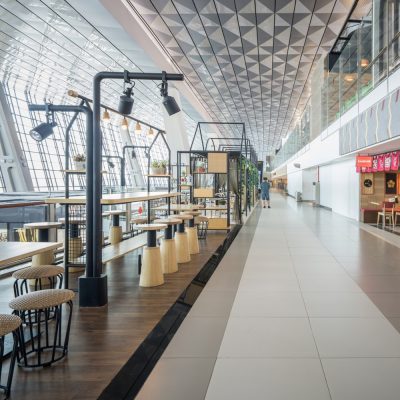
photograph : Sefval Mogalana
Terminal 3 Ultimate of Soekarno-Hatta Airport in Jakarta
Comments / photos for the Microlibrary Bima in Indonesia – page welcome
Website: SHAU

